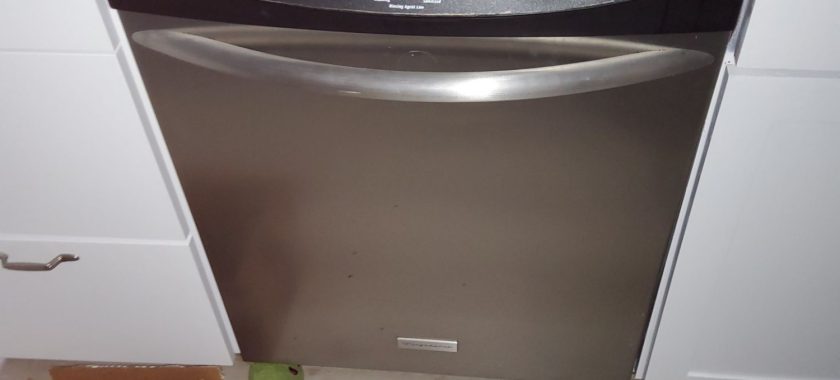A dishwasher is one of the most convenient appliances in modern households. It saves time, conserves water, and ensures that your dishes come out sparkling clean after every cycle. However, when you notice that your dishwasher is not cleaning properly, leaving food particles or residue behind, it can quickly turn from a time-saving helper into a source of frustration. Among the most common reasons for poor cleaning results are blocked spray arms and low water pressure. Understanding these issues can help you diagnose the problem and determine whether it can be resolved with some quick maintenance or requires professional repair.
The Role of Spray Arms in Your Dishwasher
Spray arms are critical components in your dishwasher’s cleaning system. They are designed to distribute water evenly throughout the dishwasher by spraying pressurized jets of water at the dishes. Typically, dishwashers have two or three spray arms—one at the bottom, one in the middle, and sometimes one at the top. These arms rotate during the wash cycle, ensuring water reaches every corner of the dishwasher.
When spray arms are functioning properly, they blast away food particles, grease, and detergent residue, leaving dishes clean and sanitized. However, if they become blocked, their effectiveness decreases dramatically.
Causes of Blocked Spray Arms
Spray arms can become clogged by mineral deposits, small food particles, or even grease buildup over time. In areas with hard water, mineral scaling is a particularly common issue. Small holes in the spray arms can easily become obstructed, reducing the water flow and preventing dishes from being cleaned thoroughly.
Signs of blocked spray arms include:
- Dishes coming out with food still stuck to them.
- White spots or streaks left behind, especially on glasses.
- Poor coverage in certain areas of the dishwasher (for example, dishes on the top rack are dirtier than those on the bottom).
Fixing Blocked Spray Arms
To check for blockages, you can remove the spray arms and inspect the holes. Using a toothpick or a small brush, gently clear out any debris. Soaking the spray arms in a solution of warm water and vinegar can also help dissolve mineral buildup. This is a straightforward maintenance step that can be performed at home and often restores performance immediately.
The Importance of Water Pressure
While spray arms are essential, their efficiency depends largely on water pressure. A dishwasher requires consistent and sufficient water pressure to clean dishes effectively. If the water pressure is too low, the jets of water will not be strong enough to dislodge food particles, no matter how clean the spray arms are.
Low water pressure in a dishwasher can stem from several causes:
- Household Water Supply Issues – If water pressure in your home is generally low, it will affect all appliances, including the dishwasher.
- Clogged Inlet Valve or Filter – The dishwasher’s inlet valve controls the flow of water into the appliance. Over time, it can become clogged with debris or mineral deposits, restricting water flow.
- Faulty Pump or Motor – The dishwasher pump helps circulate water at high pressure. If the pump is malfunctioning or worn out, water pressure will drop.
- Kinked or Damaged Water Line – The supply hose that connects your dishwasher to the household water source can become kinked, crushed, or damaged, leading to reduced water flow.
Troubleshooting Low Water Pressure
If you suspect low water pressure, start by checking your home’s overall water pressure. If faucets and other appliances are working normally, the issue may be isolated to the dishwasher. Inspect the water supply hose for kinks or damage, and ensure the inlet valve is clean and functioning. In some cases, the pump or motor may need to be repaired or replaced—tasks that usually require a professional technician.
Preventing Dishwasher Cleaning Issues
Prevention is often the best solution to avoid poor dishwasher performance. Here are some simple maintenance tips:
- Regularly clean spray arms to prevent clogging.
- Use a dishwasher cleaner or vinegar rinse monthly to reduce mineral buildup.
- Rinse dishes lightly before loading to avoid large food particles entering the system.
- Check and clean the dishwasher filter regularly.
- Inspect the water supply line and inlet valve periodically.
When to Call a Professional
While minor cleaning and maintenance can often solve the problem, some issues—like a faulty pump, motor, or severely blocked inlet valve—require professional repair. Attempting to fix these components without the proper tools or expertise can cause more damage to your dishwasher.
If your dishwasher continues to leave dishes dirty despite regular maintenance, it’s time to call in the experts. Professional technicians can quickly diagnose whether the issue is due to blocked spray arms, low water pressure, or another underlying problem.
A dishwasher that isn’t cleaning properly is both inconvenient and inefficient. Blocked spray arms and low water pressure are two of the most common culprits behind this problem. By understanding how these components work and knowing when to perform basic maintenance versus when to seek professional help, you can restore your dishwasher’s performance and extend its lifespan.
If your dishwasher still isn’t cleaning your dishes the way it should, don’t wait until the problem gets worse. Contact Chula Vista Appliance Repair Company for fast, reliable, and affordable service. Our experienced technicians can diagnose the issue and get your dishwasher back to peak performance, saving you time and frustration. Call us today and enjoy spotless dishes once again!
Contact us
(619) 880-5508


